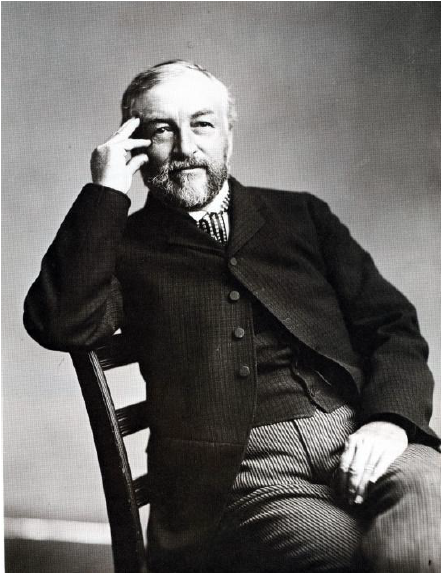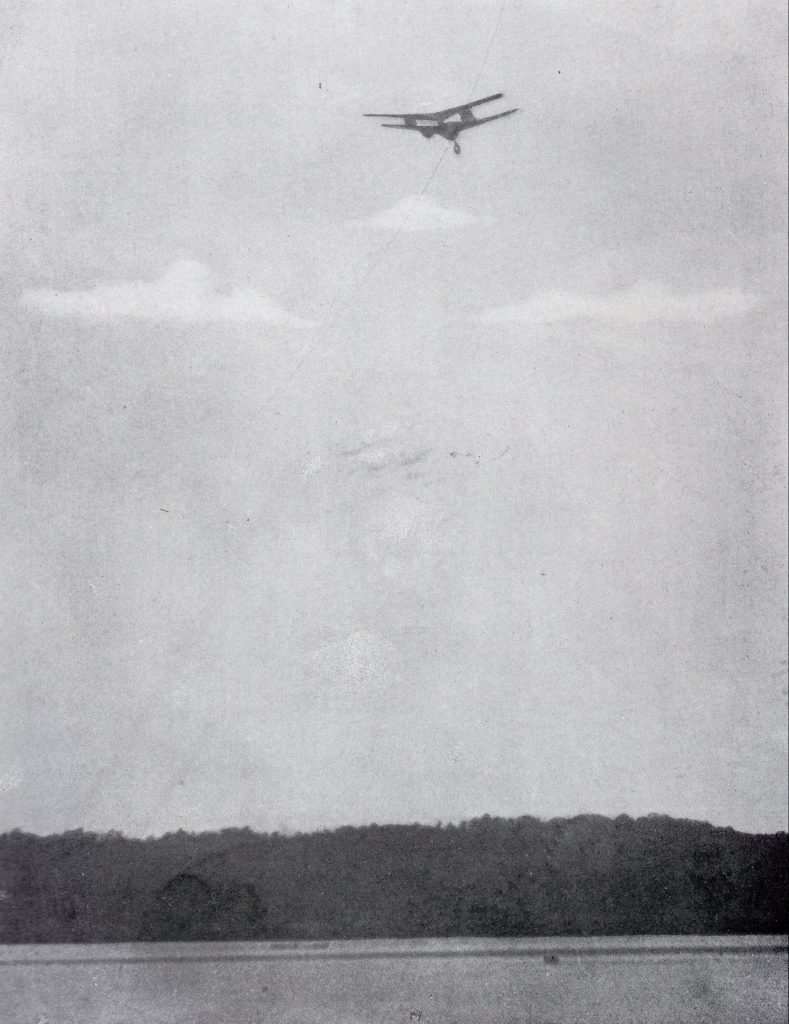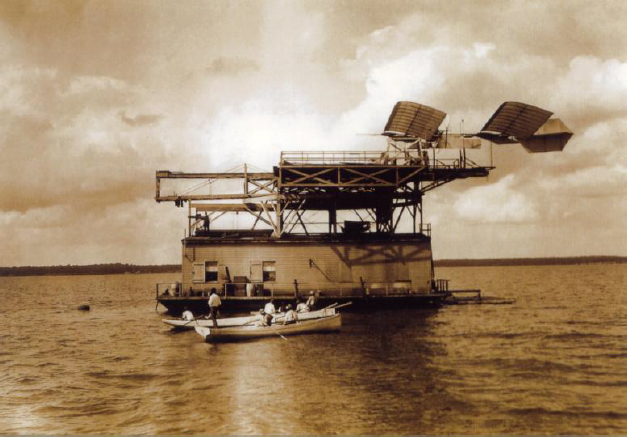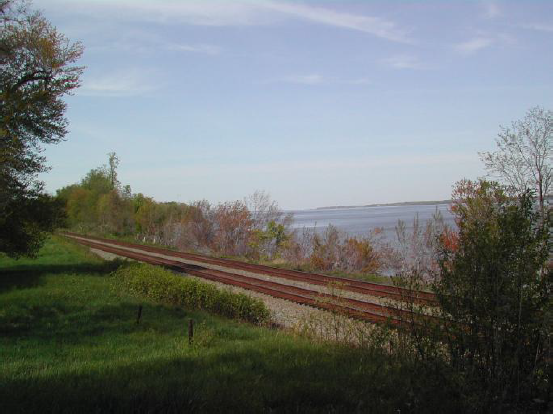Langley Flights

Near the December 1861, Civil War balloon reconnaissance site, the Widewater flight experiments of Samuel Pierpont Langley took place at the turn of the 20th Century. As one writer expressed it, “Kitty Hawk gets the glory, but credit Stafford County with an assist.” A 1966 article adds more detail — although it annoyingly reports the flights took place at “Tidewater,” Virginia. Langley, an aviation pioneer and astronomer, indeed conducted his flight experiments off Stafford’s Widewater Potomac River banks. A self-educated genius, born in 1834, he had worked at the Harvard Observatory in 1865, as a U.S Naval Academy mathematics professor, as director of Pittsburgh’s Allegheny Observatory, and a professor at Western Reserve University. Langley had been experimenting with flying machines since the 1880s before his appointment as third secretary of the Smithsonian Institution (1887).
On May 6, 1896, he launched a pilotless airplane from a houseboat off Chopawamsic Island, which belongs to Stafford County. The flight, the first mechanically-propelled flight by heavier-than-air machines — which Langley called “aerodromes” — covered 3,000 feet, followed by another which traversed 4,200 feet. Some of Langley’s 1896 work with “Aerodrome No.5” was documented and photographed by Alexander Graham Bell. Based on available information, it does not appear that Bell actually visited Stafford, although that is a possibility. He reportedly exited a train at Quantico and made his way to the Potomac from there. Of Langley’s work, Bell wrote:
under the impulse of its engines alone, it advanced against the wind, and while drifting little and slowly ascending, it described a curve of about 100 metres in diameter and having been driven its course for abut a minute and a half at a height in the air which I estimate at 81 feet…
The plane landed in the Potomac River having achieved a top speed of 25 miles per hour.

In October 1903, with pilot Charles M. Manly aboard, Langley attempted two trials off Widewater from a houseboat with a full-sized, piloted airplane. These experiments ended in crashes. He tried again off Arsenal Point, where the water was narrower, on December 8, 1903. Those also ended in failure. His experiments had cost $73,000 — $50,000 from the Ordnance Board and $23,000 from the Smithsonian. These remarkable events were immediately eclipsed by the December 17,1903, Wright Brothers’ experimental flight at Kill Devil Hills, near Kitty Hawk, North Carolina — much shorter flights, but with all-important successful landings. Wilbur Wright later wrote that Langley’s stature as a scientist had convinced them that manned-flight was possible. Langley, who died in 1906, was rightly honored as one of America’s aviation pioneers and the first aircraft carrier and an air force base in Hampton/Newport News were named for him. He also inspired future aviators, including General “Billy” Mitchell. Aviation pioneer Glenn Curtiss continued Langley’s work and successfully flew a modified version of an “aerodrome” on June 2, 1914. [Joseph Curl, Prince William Journal; Charles B. van Pelt, American History Illustrated . ]


More information: https://www.langfound.org/


